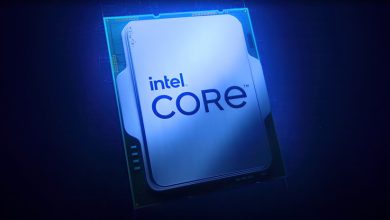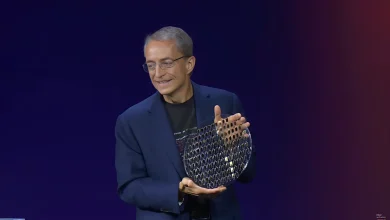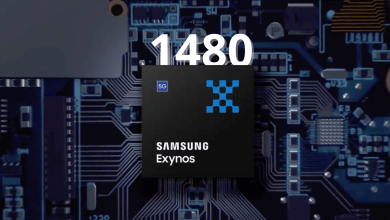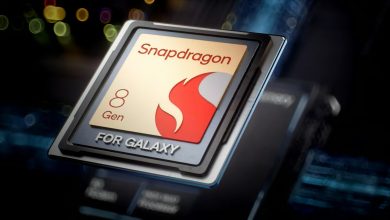Intel Rumored to Downgrade Sierra Forest, Granite Rapids & Meteor Lake

Moore’s Law Is Dead, also known as MLID shared an update regarding Intel’s upcoming server and consumer-grade CPUs. Team blue is eyeing at downgrading or nerfing their upcoming lineups to meet more realistic expectations. For context, MLID posted a video a while back, confirming the specs of Sierra Forest & Granite Rapids.
Sierra Forest Nerfed
MLID confirms that the 512-core and 344-core SRF (Sierra Forest) designs are now canceled. For some context, the configuration was simply as follows. The 344-core variant was packed with 4 tiles where each tile carried 86 cores. Similarly, it was rumored that there will be a 512-core variant, boasting 132-cores per tile (with 1 cluster disabled).
That was a major claim and people already started to wonder about the power draw of this thing. If each e-core consumes as low as 2W, the total power consumption would still break the 1000W barrier.
The first leak confirms that these two designs are no longer under consideration and are canceled. Why you may ask? Well, a key customer wants Sierra Forest (E-core only) CPUs by the end of Q2 2024. Given the complexities of making a 512-core CPU, Intel has decided to scrape off these ambiguous designs. The un-named customer is threatening to switch over to AMD if Intel does not act quickly.

The key consumer is actually looking forward to purchasing a 144-core Sierra Forest CPU from Intel. Given the importance of this deal, Intel is axing all other plans. MLID suspects that since SRF-SP will only feature 144 cores, the SRF-AP variant may go as high as just 288 cores (2 Tiles x 144 Cores per Tile).

Sierra Forest / Granite Rapids Diagrams
Sierra Forest-SP and Granite Rapids-SP will share the same socket and the same IO dies. However, Sierra Forest-AP and Granite Rapids-AP will require a new socket, though they share the same IODs.

Furthermore, the DDR5 controllers for these CPUs are actually present on the Compute Tile. Granite Rapids-AP is said to feature three 44-core Compute Tiles along with 4 memory channels (4×3=12). Granite Rapids-WS or HEDT may cut this configuration down to two 44-core tiles along with 2 memory channels (2×2=4). Similarly, Granite Rapids-SP will also feature one less Compute Tile for a total of 88-cores but 4 memory channels per each tile for 8 memory channels.
- Granite Rapids-SP: 2 Compute Tiles (44 Cores, 4 Memory Channels per each tile)
- Granite Rapids-AP : 3 Compute Tiles (44 Cores, 4 Memory Channels per each tile)
- Granite Rapids-HEDT: 2 Compute Tiles (44 Cores, 2 Memory Channels per each tile)
Below is the diagram for Sierra Forest-AP, featuring 2 tiles for a total of 288 cores. The customer in question wants the same CPU configuration, with just 1 tile disabled (144-cores). And that 144-core CPU is probably going to be marketed by Intel as Sierra Forest-SP.

A very important note is that the two Compute Tiles will have two memory channels (each) disabled. So SRF-AP will go up to 12 DDR5 memory channels instead of 16.

Sierra Forest / Granite Rapids Configuration
Keeping that information in mind, Sierra Forest-SP will now go up to 144-cores (1 Compute Tile) and will support 8-channel DDR5 memory. It is expected to launch sometime in Q1/Q2 2024, which is almost 1 year from now.

We already stated the configuration for Sierra Forest-AP CPUs above. However, as a tl;dr, Sierra Forest will be based on 2 Compute Tiles (144 Cores per tile) and will use the same IODs as Granite Rapids-AP. MLID says SRF-AP (Sierra Forest-AP) may or may not arrive, however, the leaker is positive that Intel may launch these CPUs a while after SRF-SP.

In addition, MLID suspects that due to average Intel 3 yields, team blue may disable ~10% of the cores on Granite Rapids. This means that GNR-SP could go down to 80 cores from 88, and GNR-AP to 120 cores from 132. That’s not terribly bad and most people would not bother to see this small difference. Also, GNR-WS/GNR-HEDT could feature 4 memory channels (as speculated above) or 8 memory channels.

Meteor Lake Also Nerfed
We have been hearing rumors that Intel will not release high-core count models for Meteor Lake. MLID also seems to have the same opinion based on his sources. The reason is not that hard to grasp. Phoenix Point & Strix Point are bound to challenge Intel. If Intel dedicates more of its resources to high-core count i9s instead of better and more efficient mobile APUs/CPUs, it would be a bloodbath for its market share.
As of now, the 8P+16E (24 core) and 6P+16E (22 core) MTL-S configurations are canceled. The highest configuration we will see is the 6P+8E design (14 cores), possibly for the i7 family. Even the marketing team is planning to promote Meteor Lake (i3/i5/i7) as a budget/mid-range product for gamers looking for new Intel CPUs.
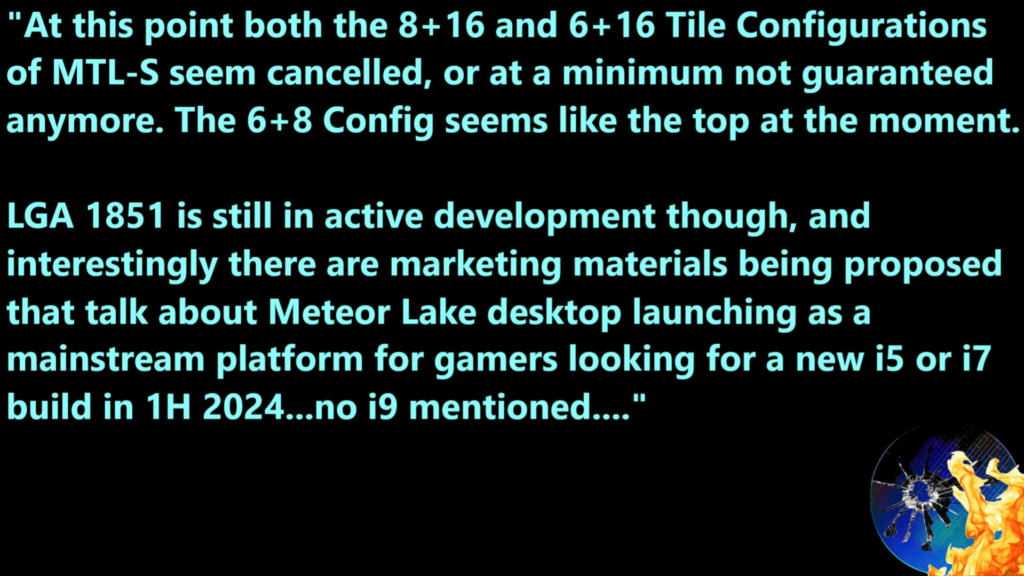
Conclusion
This may seem like a lot of information, but the actual point is fairly simple to understand. Intel is facing a lot of problems in the mobile/server market due to higher costs and inefficient designs. In the upcoming years, we may see a change of pace from team blue. You can already sense it coming given how MTL-S is being planned.
Source: MLID, Image by Freepik (Feature Image Background)



